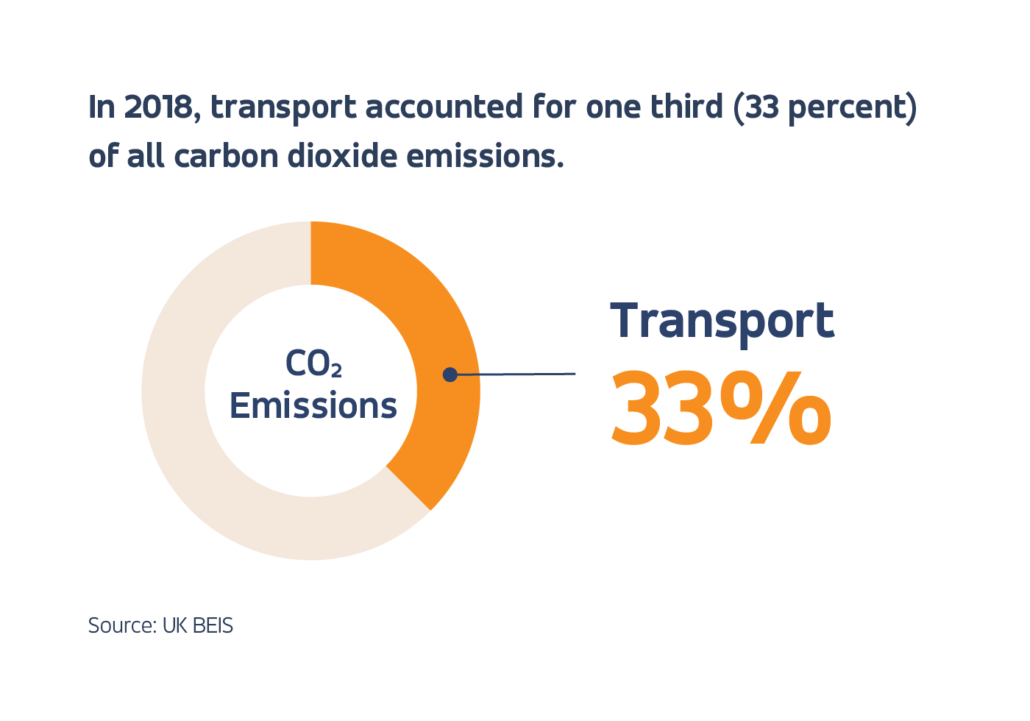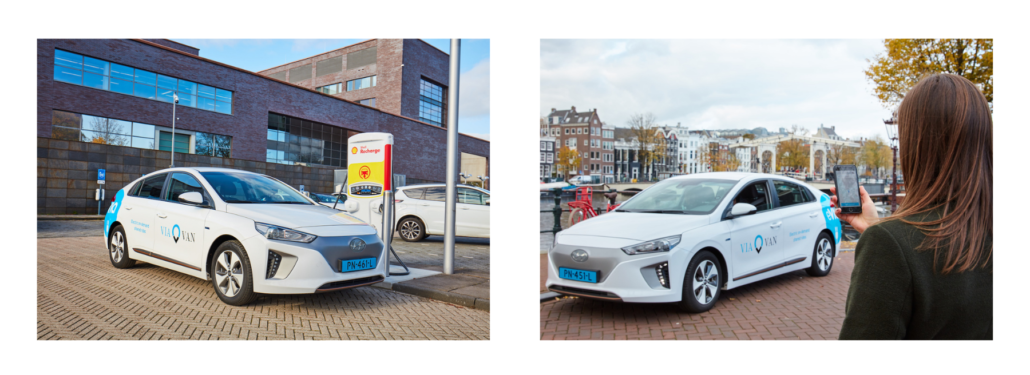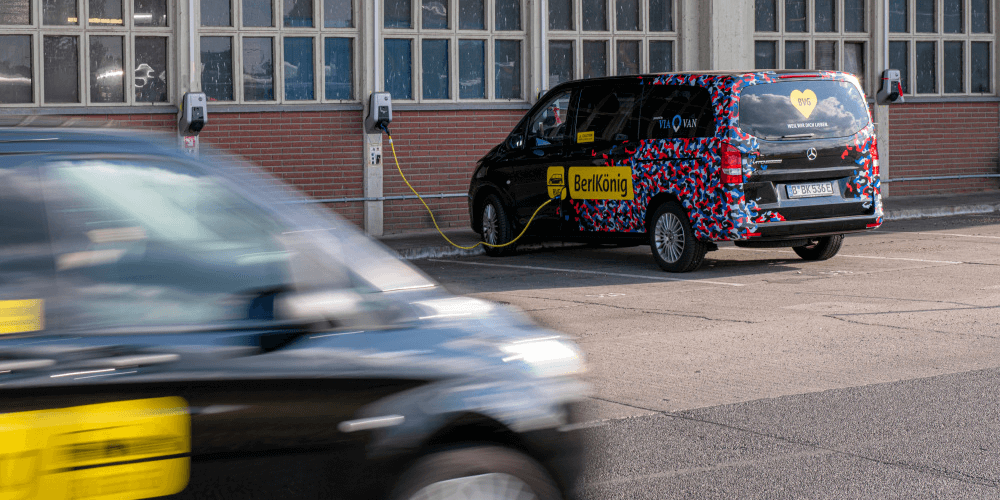Cities and authorities all over the world are working to electrify their transport systems in order to achieve decarbonisation targets. The UK is a leading force in this critical global effort, recently announcing that it will ban the sale of all petrol and diesel cars by 2030. However, we need to do more than just make sure vehicles are electric.
If the UK is serious about achieving its decarbonisation goals and playing its part in reducing the impact of global climate change, we’ll need to make bold, multi-pronged, coordinated changes to the way UK residents move. Helping people transition their family cars from diesel or petrol to electric power is a step in the right direction, but there’s much more to be done. A definitive 2018 report on global warming by the Intergovernmental Panel on Climate Change found that there is simply no way we can sufficiently reduce the climate impact of transportation if we only change the way vehicles are fueled; it is imperative that people move out of cars into other forms of transport, and that trips that happen in vehicles be increasingly shared. Similarly, the Institute for Transport Development & Policy has found that carbon emissions from global transport in 2050 could be 60% lower in a scenario with heavy transition to public transport, compared to a scenario where vehicles are electrified without increases in public transport use.
Clearly, to achieve sustainability goals — not to mention other societal priorities like equitable access to work and education — communities must focus on moving people from private vehicles to shared transport, and not just on decarbonising private vehicles.

Electric is not enough
Today, transportation accounts for roughly a third of all carbon-dioxide emissions in the UK, making it the largest single sector carbon contributor — above electricity generation, agriculture, and the residential sector. Especially over the past half-decade, Whitehall and local governments have worked to cut back emissions by supporting a transition from diesel and petrol vehicles to electric, lower-emitting models.
There have been many central and local government schemes to encourage electric vehicle (EV) uptake and to build the infrastructure for private EV use in the UK, including discounts on road tax, subsidies for private charging bays, and more. While these are critically important steps, uptake initiatives currently are only helping to address the average carbon emissions per vehicle, but do nothing to reduce the number of vehicles on the road.
To be clear, there is a carbon ‘cost’ to every electric vehicle on the road and every mile it travels, even if EV emissions are lower than those from internal combustion engine (ICE) vehicles. The UK still relies on fossil fuels for roughly a third of its electricity, and there’s a limit to our capacity to add new low-carbon sources of electricity. Therefore, to have the greatest impact on carbon reduction, we need to consider both the average emissions per vehicle and the total number of vehicles on the road. We should be working to not just switch private vehicles from diesel/petrol to EVs, but to ensure we’re combining journeys and sharing our mobility as much as possible — even and especially when using EVs. This move will help us reduce our overall electricity needs, the required investment in new infrastructure, and the emissions associated with both.
In addition, taking vehicles off the road — and not just replacing them with cleaner models — can reduce the production footprint and supply chain requirements associated with battery and vehicle production. Particularly because EV batteries require rare earth metals and other limited resources, there remains a significant environmental cost associated with private car ownership, even if the vehicle is electric.

Ease of electrification is amplified when shared
Luckily, investing in shared transport does not need to come at the expense of investment in electrification. If anything, by reducing the number of private vehicles on the road and encouraging greater use of shared transport, we can actually make the EV transition more affordable and easier to implement.
In general, electric vehicles — not to mention the infrastructure associated with them — require higher upfront capital investment than conventional vehicles do. However, the running and maintenance costs for EVs are much lower. By ‘sweating’ EV assets and using them in very high-utilisation settings — including demand-responsive transport, bus networks, and car clubs — we can more quickly make them cost-competitive with diesel/petrol vehicles. Further, concentrated efforts to introduce EVs in shared mobility benefit from centralised infrastructure setup and vehicle acquisition, likely reducing upfront costs.

Additional benefits from shared transport
High rates of private car ownership and individual journeys don’t only have environmental consequences; they also create gridlocked city streets, take up space that could be used for active modes like walking and cycling, and leave behind those without their own cars.
In looking at the dramatic impacts of COVID-19, we’ve seen how much more pleasant, safe, and comfortable our cities and towns can be when street space is set aside for walking, wheeling, and cycling. By limiting private car use, and enabling people to use shared mobility, we can cut back on gridlock and congestion and create permanent space for active travel and for community living.
Further, investing in shared and public mobility can help build equity and accessibility by supporting communities that haven’t benefited from subsidies and support for private EVs. Lower income communities can’t easily afford private vehicles, and it’s crucial that they have access to affordable, convenient alternatives to connect to work, healthcare, education, and more. The same is true for individuals who aren’t able to drive themselves in private cars, whether due to mobility challenges, sight limitations, or special education needs.
This focus is in line with the Shared Mobility Principles for Liveable Cities , an initiative agreed upon by an immense international coalition, which focuses on providing affordable, healthy, and integrated mobility for all people.

A path forward
In order to have the greatest impact on sustainability — with all of the positive benefits that come from good public transport access — we should focus future investment on programs to provide shared, electric transportation. Demand-responsive transport, public buses, car clubs, and other forms of public mobility can all be run using low-carbon / fully-electric vehicles, and can help get private diesel/petrol vehicles off the road entirely.
For example, the recently-launched Via powered DRT service in Milton Keynes uses fully-electric minibuses. Looking globally, many of Via's DRT services across Germany are transitioning to fully-electric fleets. Especially as we work to build back from the challenges of the COVID-19 health and economic crisis, investment in shared, low-carbon, electric mobility has an important role to play.




